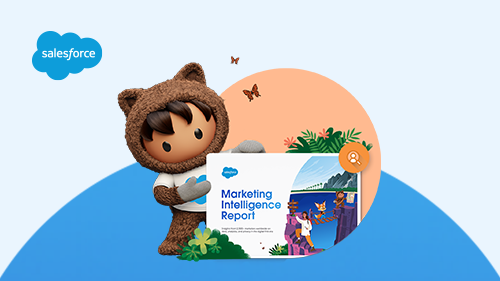Finserv With A Human Touch: Prospa and Nano Digital Home Loans Show How


How can finserv leaders strike the right balance between relationship building and tech-enabled conveniences? We spoke with leaders who say those goals aren’t mutually exclusive — in fact, each depends on the other.

Stuart Ward
As an industry, many people still associate financial services with traditional business models and slow-moving processes. While it’s true that many organisations are still on a journey to transform their operations and culture, we know that others are using tech-enabled solutions or even building digital-first businesses from the ground up.
But, ultimately, almost every finserv organisation is predicated on a very human element: relationships. If it sounds like a contradiction for finserv to be both human-centred and tech-driven, research indicates they actually go hand-in-glove.
In a report from Salesforce and Bain & Company, nearly 65% of customers say they support their bank or insurer using their data for more personalised services. And 70% of banking and insurance customers prefer digital channels for everything but the most emotive experiences. In other words, customers want the conveniences of digital experiences — but they still expect human connection in certain contexts.
To understand what this balance looks like, let’s consider two Trailblazers: Nano Digital Home Loans and Prospa. Earlier this year, I spoke at World Tour Sydney 2022, moderating a discussion with Nano’s co-founder and CEO, Andrew Walker, and Prospa’s Head of Business Enablement, Alison Binskin.
Alison and Andrew shared some great insights to help others in the industry balance tech-enabled seamlessness and good old-fashioned human relationships. Here are a few of those insights.
Designing human experiences for customers
Prospa and Nano are businesses built around the needs of their customers, first and foremost — and both point to the importance of a strong tech foundation that enables end-to-end visibility of individual custom journeys.
As the world’s fastest mortgage originator, Nano serves customers seeking home loans as well as providing a licensing platform to other lenders of record. To achieve that kind of speed without sacrificing great customer experience, Andrew says they needed a linear view of the customer.
“The key thing we found on our journey is that we needed a vertical thread of architectural logic throughout the business. We needed to know every [customer] interaction, the first touchpoint and last touchpoint, regardless of channel.”
Nano has built this thread using Salesforce, including Marketing Cloud, Service Cloud, and Financial Services Cloud. Without this comprehensive view of each customer’s journey, Andrew says organisations risk delivering clunky experiences — most commonly, confusing transitions from one stage to another, including reestablishing entire relationships once customers are ready for onboarding. At Nano, Salesforce has enabled not just a streamlined sales funnel but also easier handovers between targeting, servicing and onboarding.
Likewise, Alison says Prospa needed to achieve a baseline of speed and convenience. As a cash flow lender for small to medium-sized businesses (SMBs), their customers are time-poor and don’t have the luxury of filling out complicated applications during the workday. Whether it’s a renovation or truck maintenance, customers tend to need immediate, same-day assistance to access funds.
Rather than eliminating a human touch, many of these processes and experiences are designed with customer needs at the centre, helping people get the assistance they need, when they need it, in the channel that’s easiest for them — and it also frees employees to focus on less manual tasks to concentrate on building trusting relationships.

Making space for relationship building
While Prospa customers need easy, convenient experiences, the nature of small business challenges often requires a human ear. Alison notes that, while customers require digital channels, around 60-70% of their customers often still want to speak with another person, whether by SMS, email, chat or a phone call.
“For SMBs, this is their livelihood. They can’t always express intimate details in an online application about what their business means to them.”
While Salesforce has helped them take personalised, proactive approaches to these interactions — including managing a 500% increase in calls during the early days of COVID-19 — part of it also depends on how the business measures success and determines priorities. For instance, Alison explains that their call centre doesn’t measure success according to average handle time: “We want to be there to listen.”
And, though Nano is an algorithmic lender, Andrew says there will always be a point where a customer needs help. The digital backbone, built with Salesforce, is what helps nudge customers between channels once they hit a roadblock.
Getting proactive and personalised
This view of customer journeys — what Andrew describes as a “linear” view — isn’t just important for finding new customers or solving customer problems. It’s also key to servicing customers in a sustainable, scalable way that builds trust. Customers now expect much more than bare-minimum service — they want businesses who partner with them and are just as invested in their success as they are.
For Prospa, this means helping owners build their businesses, not just during current opportunities but future ones, too. Alison cites triggers throughout the customer lifecycle, which help their team proactively make suggestions and reach out to SMB owners to pre-empt obstacles before they become urgent problems.
A complete view of their customers also allowed Prospa to reach out during moments of crisis, proactively offering payment relief to customers impacted by the floods or bushfires.
Andrew describes a similar philosophy behind Nano’s approaches, noting that this ability to understand a customer’s journey with you and to tailor experiences accordingly is the “key baseline of how to build a business today.”
“It’s not just about tracking now or the future, but also the ability to look back and see what the relationship has been over time. That’s how you have a conversation with someone to retain them as a customer.”
Understanding barriers to better experiences
Of course, most finserv companies would love to provide frictionless experiences and proactive approaches to building relationships. Andrew is quick to point out that companies can let down a customer even when they’re extremely invested in client success, whether that takes the form of a clunky experience or undelivered promises. Generally, the root causes are far more systemic or even technical.
For starters, Andrew points to technical debt as a major barrier for the industry as a whole.
“If you’re a bank, [you may have] a mainframe you bought in the 1980s, a COBOL backing system, with thousands of middleware layers to make it all hang together.
“That means every time you build a product or think about the user experience, you’re building from the technology out, rather than the customer in. You’re limited in the way you design things… because everything is dictated by a system that’s frankly 30 to 40 years old. It’s robust, it scales, and it may never break down, but it can be kind of crap for the customer.”
Learn more about where the industry is headed and how to stay ahead of the curve
You can hear the rest of the insights from our conversation on Salesforce+, but be sure to check out the report, The Customer Imperative in Financial Services, to understand the roles of trust, personalisation and digitisation.
















